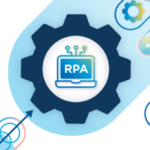IoT and Blockchain Opportunities and Challenges

The IoT and blockchain technology convergence is on the rise, being mentioned in the context of nearly any industry. The blockchain is expected to enhance the security of core business processes along with eliminating a serious number of manual actions.
More precisely, take a look at the centralized network model that IoT currently adopts. Devices that connect to that network can not make their own decisions, even if called “smart”. A central authority of the network does the job. In blockchain-powered networks, devices serve as nodes and control any bit of data that tries to sneak inside. Any action must be approved by each node, and only then it is accepted. This power brought by blockchain brings certain opportunities to IoT, but do not forget about the possible obstacles. We will take a look at both.
IoT + Blockchain Opportunities
Blockchain brings a certain number of opportunities to IoT networks. To grasp the idea of how exactly it contributes to IoT, it is better to look at the examples from different industries.
Healthcare
There are different ways how blockchain can be applied in healthcare because of the variety of IoT utilization. Wearable health monitoring devices help medical staff acquire all-around data about their patients, but when it comes to data transmission, the issue of security arises. Blockchain solves the problem by providing stable and secure ways of doctor-patient communication and sharing of sensitive medical data. Data is the most important part of the healthcare services lifecycle as it allows doctors to create better treatment plans, improve patient outcomes, and so on. So combining the technologies that generate a synergy in terms of data storing, sharing, and protection is a clear advantage.
The abovementioned wearable devices collect health data that can be useful at the intersection of healthcare and other industries. Wearables collect data about a person’s physical activity, diet, heart rate, and more. All that data can be used by insurance companies to predict health state, reducing ailments and customer claims.
Security
IoT often faces cybersecurity issues because of the complexity of IoT networks. A pile of devices collecting and exchanging heterogeneous data is hard to manage, and hackers often take advantage of such a vulnerability. To prevent IoT networks from being exposed to DDNS attacks, cybersecurity specialists apply blockchain. With the help of it, IoT can change its insecure centralized client-server model and adopt a more safe, blockchain-powered decentralized architecture. In this architecture, all devices, or nodes, decide whether to accept the changes or not, instead of going along with the decision of a central authority.

In terms of personal data security, blockchain powers IoT systems with one more security level that no hacker can bypass. This robust encryption mechanism would allow IoT devices to exchange intimate information about people’s routines and be protected from criminals. This can be applied to wearable devices and smart home appliances that constantly collect and share such data. And the most important of such devices are IoT home security systems that include connected motion detectors and video cameras – blockchain helps them keep homes safe.
Insurance
Insurance is a process full of space for human error. When two sides, a policyholder and an insurer, sign a contract, it can be misunderstood due to complex language. This leads to claims on the side of a policyholder. A smart contract allows putting the agreements into the blockchain, and when the conditions are met, the insurer can release the payment automatically. This process leads to a reduction in human involvement and cuts costs.
Using a blockchain plus IoT synergy, insurers analyze drivers’ road habits and driving frequency via telematics. Sensors collect data and then send it by blockchain-secured connections. Having this info at hand, insurers can adjust insurance rates.
Supply chain
Supply chains are complex to manage due to the numbers of parties involved. A single failure on any point of the chain, be it a remote supplier warehouse, a transit truck or one of the endpoint warehouses, leads to incommensurable consequences. Think about what can happen if food transition rules are violated – the products are spoiled and can damage consumers’ health. To track anything from product location to warehouse temperature and humidity levels and then perform secure and automated data transactions, blockchain-based IoT networks are applied. They help prevent any of the abovementioned issues and respond promptly to condition changes.
IoT + Blockchain Challenges

Since blockchain has a node-based architecture, the developers must treat every IoT device as an independent node of the system. Therefore every piece of data from every device is transmitted in blockchain as a transaction. This and other interoperability peculiarities create certain challenges in IoT and blockchain interconnection:
- There is still no common opinion on whether the blockchain is a cheap fix for the security of IoT networks or not.
- Current business models need to undergo a lot of changes and reach tons of agreements to adopt such a network model.
- The complexity of a blockchain-controlled network is pretty high. Imagine that one blockchain-based application receives data from connected devices and makes a decision that conflicts with another application, that can make decisions too. It is also an issue of smart contracts.
The Bottom Line
Blockchain promises to bring IoT solutions to a new level of performance. It allows for better security and is expected to automate the management of devices. But still, there are certain challenges to overcome. Keep in mind that the number of connected devices dramatically grows, which increases the demand for computational actions. The more devices connect to each other, the more verifications they need – and blockchain can handle all the related issues. Yet the network developers still have to test blockchain for their needs, this digital assets platform is expected to be the best solution.




Leave a Reply